Disclosure: This article contains affiliate links. We may earn a commission from purchases at no extra cost to you, which helps our travel content.
As someone who typically navigates between digital landscapes and natural wonders, my journey to the heart of ancient Persia presented an intriguing departure from my usual tech-adjacent explorations. After three consecutive trips to innovation hubs, I deliberately sought a destination where human ingenuity manifested not in code but in stone—where the achievements of our ancestors could provide perspective on our modern technological pursuits. The UNESCO World Heritage sites of Persepolis and Pasargadae in Iran offered precisely this counterbalance: monumental testaments to human capability dating back to 550 BCE, standing in stark contrast to the ephemeral nature of today's digital creations. This methodical exploration of Iran's archaeological treasures became my most thought-provoking journey of the year, challenging my understanding of technological progress and cultural preservation in ways I hadn't anticipated.
Planning Your Cultural Expedition: Logistics and Preparations
My approach to traveling to Iran mirrored my QA testing methodology: thorough preparation, systematic research, and contingency planning. Unlike many destinations, Iran requires advance preparation, particularly for travelers with Western passports.
First, the visa process: I applied for my tourist visa approximately 8 weeks before departure through the Iranian consulate in Auckland. Students should note that having a letter of invitation from an authorized Iranian travel agency significantly expedites this process. I used Key Persia Travel, whose documentation was impeccably organized.
For accommodations, I bypassed international booking platforms (many don't operate in Iran due to sanctions) and instead used Iran Traveling Center recommendations to find authentic guesthouses. In Shiraz (the gateway to Persepolis), I stayed at Niayesh Boutique Hotel, a converted traditional house with a central courtyard that cost approximately 30 USD per night—perfect for my mid-range budget while offering cultural immersion.
Currency management requires strategic planning. International cards don't work in Iran, so I carried euros (widely accepted for exchange) and converted small amounts as needed. I tracked my spending meticulously using the XE Currency App Pro which works offline—crucial since international roaming can be inconsistent.
For transportation between sites, I pre-arranged a driver through my guesthouse at 45 USD for a full day covering both Persepolis and Pasargadae (approximately 60km apart). This proved more cost-effective than joining larger tours and allowed me to adjust my schedule based on lighting conditions for photography and crowd levels.
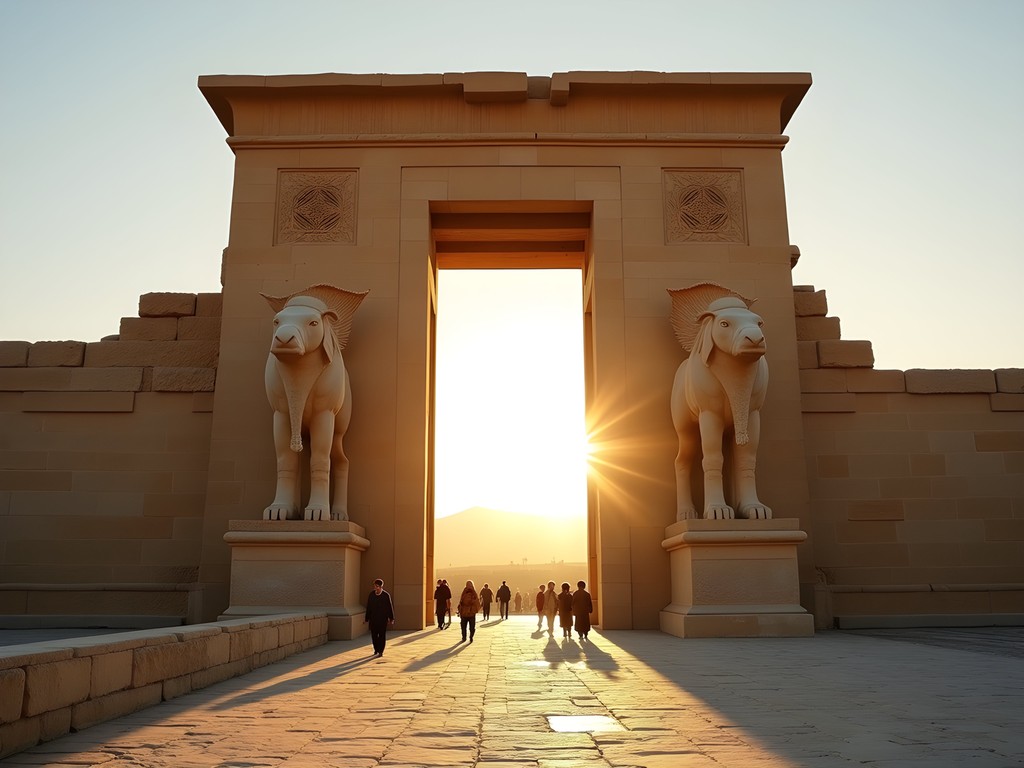
💡 Pro Tips
- Apply for your Iranian visa at least 8 weeks before travel and obtain an invitation letter from an authorized travel agency
- Bring euros or US dollars in cash as international cards don't work; exchange small amounts as needed
- Download offline maps, translation apps, and VPN services before arrival as internet access can be restricted
Persepolis: Systematic Exploration of the Ceremonial Capital
Persepolis demands a methodical approach. Rather than wandering aimlessly, I developed a systematic exploration strategy that maximized my understanding of this vast ceremonial capital of the Achaemenid Empire.
Morning Exploration (7:30-10:30 AM): I arrived at opening time (7:30 AM) to capture the site in optimal morning light before the day's heat intensified. Beginning at the monumental Grand Stairway with its 111 wide, shallow steps designed for dignified processions, I proceeded to the Gate of All Nations—massive stone bulls that once guarded the entrance to this ancient wonder.
The Apadana Palace deserves particular attention. Its audience hall supported by 72 columns once stood 20 meters high, and the intricate relief carvings on the eastern stairway depict delegations from 23 nations bearing gifts to the Persian king. I spent nearly an hour analyzing these reliefs, which function as a detailed ethnographic record of ancient peoples.
Afternoon Exploration (3:30-6:00 PM): After retreating to Shiraz during midday heat, I returned to explore the Treasury and the Hundred-Column Hall when temperatures dropped. The on-site museum houses artifacts discovered during excavations, providing crucial context to the stone ruins.
For serious students of archaeology, I recommend bringing the Persepolis: Images of an Empire which provides detailed analysis of the iconography you'll encounter. Its reconstructions of how the site originally appeared helped me visualize the vibrant painted surfaces that once covered these now-bare stones.
As a QA professional, I was particularly impressed by the engineering precision evident throughout Persepolis. The drainage systems designed to protect the structures from water damage continue functioning after 2,500 years—a testament to Persian engineering that puts some modern software systems I've tested to shame in terms of longevity and reliability.
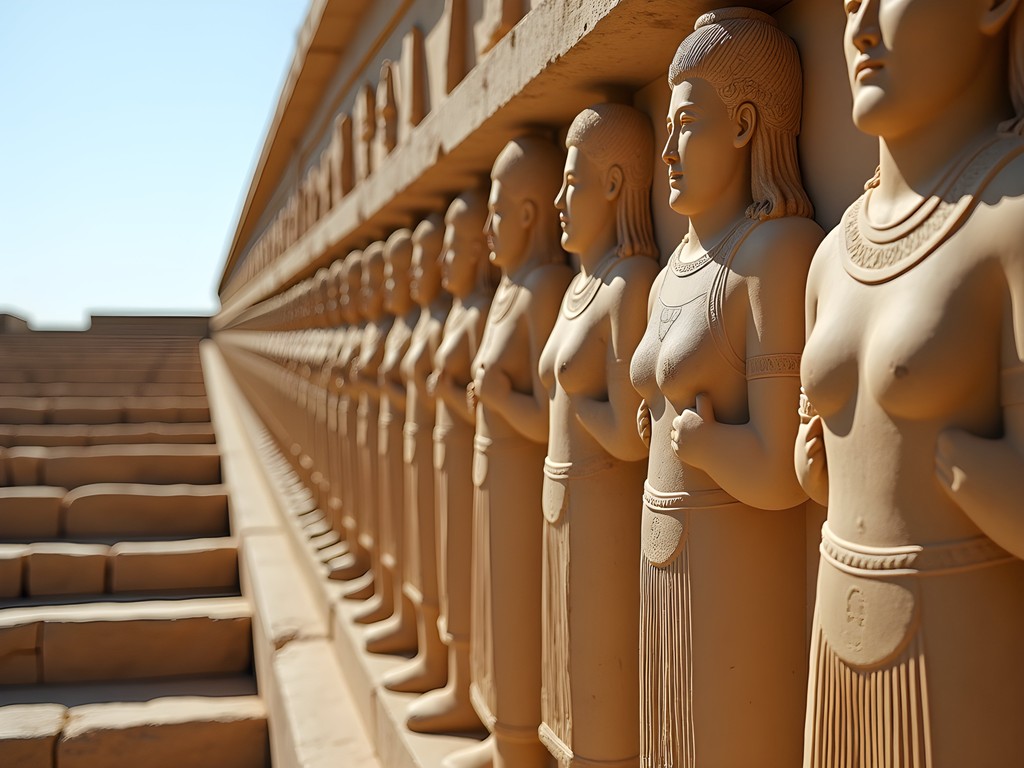
💡 Pro Tips
- Visit twice: early morning for photography and late afternoon for cooler temperatures
- Hire a knowledgeable guide (approximately 20 USD) who can explain the complex symbolism in the reliefs
- Bring a wide-brimmed hat and refillable water bottle as shade is minimal and bottled water on-site is expensive
Pasargadae: The First Capital and Tomb of Cyrus the Great
Located 60 kilometers northeast of Persepolis, Pasargadae offers a more contemplative experience with fewer tourists and more open space. As the first capital of the Achaemenid Empire and burial place of Cyrus the Great, this site predates Persepolis by several decades.
Pasargadae's structures are more dispersed than Persepolis, covering approximately 1.5 square kilometers of plain. I recommend allocating 3-4 hours for exploration, wearing comfortable walking shoes, and carrying a compact binoculars to appreciate distant architectural details.
The site contains several key structures:
-
Tomb of Cyrus the Great: This simple yet dignified six-stepped limestone structure resembles a modest house atop a platform. Its architectural influence spread throughout the region and even influenced later Islamic tomb design. When I visited, several Iranian families were picnicking nearby—a reminder that these are not just tourist attractions but places of profound national significance for Iranians.
-
Palace Complex: The remains of several palaces feature distinctive black and white stone doorjambs with relief carvings. The Palace with its columned porticoes demonstrates early Persian architecture before it reached its zenith at Persepolis.
-
Zendan-e Soleyman (Solomon's Prison): This enigmatic stone tower likely served religious purposes rather than imprisonment, despite its modern name.
-
Tall-e Takht (Throne Hill): This massive stone platform was possibly intended as the foundation for a grander palace that was never completed.
What struck me most about Pasargadae was its innovative water management system. As someone from Brazil who grew up hearing my mother discuss environmental systems, I was fascinated by the qanat underground aqueduct system and the geometric garden design (the oldest known example of the classic Persian chahar bagh four-quadrant garden). These ancient Persians were implementing sustainable water management solutions that regions around the world still struggle with today.
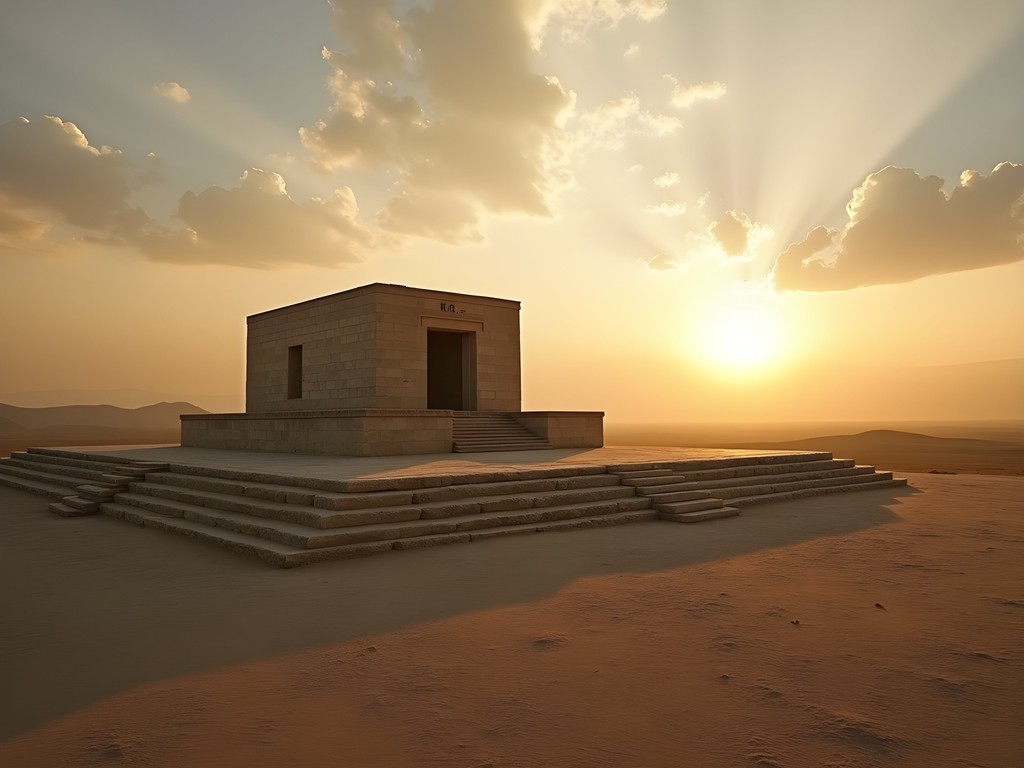
💡 Pro Tips
- Visit Pasargadae before Persepolis chronologically to understand the evolution of Persian architectural styles
- Bring polarizing filters for your camera to enhance the contrast between the black and white stone elements
- Download the unofficial Pasargadae AR app before visiting to see digital reconstructions of the original structures
Cultural Context: Beyond the Stones
Understanding these archaeological sites requires engagement with the broader cultural context of both ancient and modern Iran. As a systematic explorer, I incorporated several elements into my journey that significantly enriched my experience.
Literary Preparation: Before my trip, I read both historical accounts and contemporary Iranian literature. I particularly recommend The Persian Empire for serious students of archaeology and history. This collection of primary sources provides crucial context for understanding the monuments you'll encounter.
Culinary Exploration: Persian cuisine offers insight into cultural continuity spanning millennia. In Shiraz, I participated in a cooking class where I learned to prepare fesenjan (pomegranate walnut stew) and tahdig (crispy rice) using techniques and ingredients that have remained remarkably consistent since ancient times. The instructor pointed out that some dishes depicted in Persepolis reliefs are still prepared for special occasions today.
Language Connection: While English is limited outside tourist areas, I found that learning basic Farsi phrases opened meaningful interactions. Iranians responded with genuine appreciation to even my rudimentary attempts at their language. The modern Persian language (Farsi) is a direct descendant of the language spoken during the Achaemenid period, with many words remaining recognizable despite the passage of 2,500 years.
Contemporary Art Connections: In Shiraz, I visited galleries showcasing how contemporary Iranian artists reference and reinterpret ancient Persian motifs. This living connection between past and present reminded me of how my work in technology often involves building upon existing frameworks while creating something new—a universal human impulse visible across millennia.
Most importantly, conversations with local university students revealed how these ancient sites function as anchors of cultural identity in modern Iran. Many expressed pride in their pre-Islamic heritage alongside their Islamic traditions, demonstrating the complex layering of identity that visitors should approach with nuance and respect.

💡 Pro Tips
- Visit the Pars Museum in Shiraz to understand the historical context before visiting the archaeological sites
- Attend a traditional music performance featuring instruments depicted in ancient reliefs
- Schedule time for tea houses where university students gather—many speak English and welcome conversations with visitors
Digital Preservation Meets Ancient Heritage
As someone who straddles the worlds of technology and environmental conservation, I was particularly interested in how digital tools are being deployed to preserve these irreplaceable monuments. My background in QA testing gave me a unique perspective on these efforts.
3D Documentation Projects: At Persepolis, I observed a team from the University of Tehran using photogrammetry to create high-resolution 3D models of the reliefs. These digital twins serve multiple purposes: creating precise documentation of the current state of deterioration, allowing for virtual access, and potentially guiding future restoration efforts.
Using my own mirrorless camera, I participated in a citizen science initiative where visitors contribute photographs to a collective database used for ongoing monitoring. The project coordinator explained how AI algorithms compare images taken over time to detect subtle changes in the stone surfaces that might indicate environmental damage.
Climate Change Impacts: My mother's work in climate science has made me particularly attuned to environmental threats to cultural heritage. Both sites face increasing challenges from extreme weather events—flash floods threaten foundations, while temperature fluctuations accelerate stone deterioration. The Iranian Cultural Heritage Organization has implemented drainage improvements at Persepolis based on digital modeling of water flow patterns during intense rainfall events.
Virtual Access Initiatives: Recognizing that many students worldwide cannot visit in person, several Iranian universities have collaborated on virtual reality reconstructions that allow remote exploration. I tested a prototype of one such application and provided feedback on the user experience—a satisfying intersection of my professional skills and personal interests.
What impressed me most was the Iranian commitment to balancing physical conservation with digital innovation. Rather than seeing technology as separate from heritage preservation, site managers are integrating digital tools into comprehensive management strategies. This holistic approach mirrors my own philosophy that technology should serve as a tool for environmental and cultural preservation rather than existing in opposition to it.
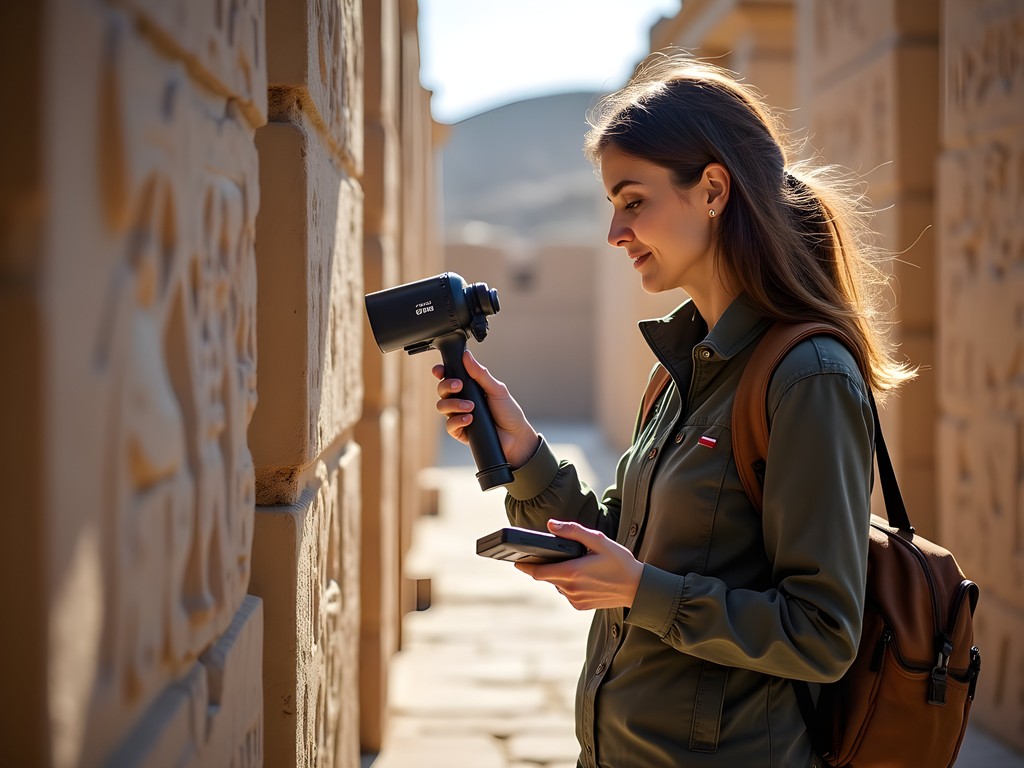
💡 Pro Tips
- Download the Persepolis AR app before visiting to see digital reconstructions overlaid on the actual ruins
- Contribute your photos to the Persepolis Digital Archive Project by tagging them with specific hashtags
- Visit the digital laboratory at Shiraz University where conservation technologies are being developed (requires advance arrangement)
Final Thoughts
As my week in ancient Persia drew to a close, I found myself recalibrating my perspective on technological progress. Standing amid structures that have endured for millennia made me question the ephemeral nature of our digital creations. Will anything we build today still communicate our values and achievements 2,500 years from now? The Persian achievement wasn't just architectural—it was creating systems designed for genuine longevity.
For students considering this journey, I encourage approaching these sites not just as tourist attractions but as profound learning laboratories. The Achaemenid Persians solved complex engineering, administrative, and cultural challenges that remain relevant today. By engaging deeply with this heritage—through preparation, systematic exploration, and cultural context—you'll gain insights applicable far beyond archaeology or history.
As I returned to my work testing software designed to become obsolete within months, I carried with me a new standard of durability and purpose. Perhaps our most important technological question isn't 'How quickly can we build it?' but rather 'How meaningfully can it endure?'
✨ Key Takeaways
- Ancient Persian sites offer profound lessons in sustainable design and engineering that remain relevant to contemporary challenges
- Cultural context—through food, language, and interactions with locals—transforms archaeological tourism into meaningful cultural exchange
- The intersection of digital preservation technology with ancient heritage demonstrates how innovation can serve conservation rather than threatening it
📋 Practical Information
Best Time to Visit
October-November or March-April for moderate temperatures
Budget Estimate
$50-75 USD daily including accommodations, transportation, food and site entries
Recommended Duration
Minimum 5 days (2 for Persepolis, 1 for Pasargadae, 2 for Shiraz context)
Difficulty Level
Intermediate
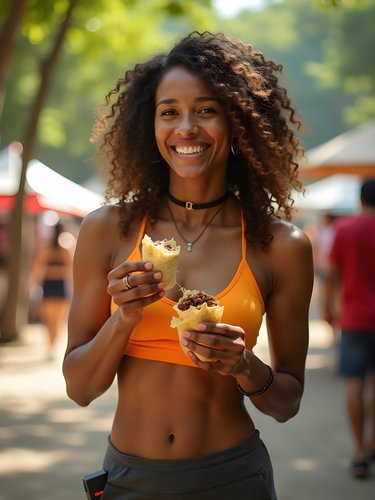
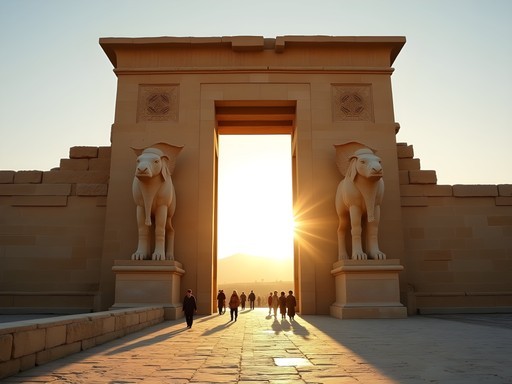

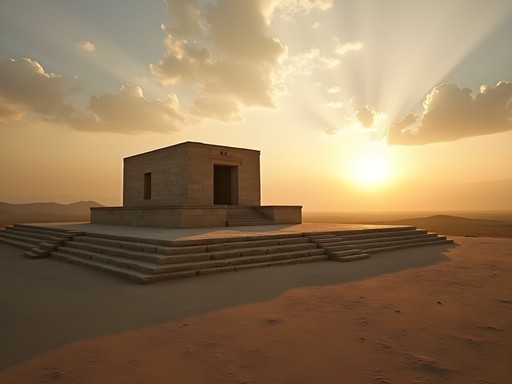












Comments
HistoryBuff42
I visited both sites last month and was blown away by how well-preserved they are considering their age. What really enhanced my experience was downloading some lectures about Achaemenid history beforehand - listening to them while walking through the ruins made everything come alive. The contrast between Persepolis as a ceremonial showcase and Pasargadae's more austere design tells you so much about how Persian imperial ideology evolved. Did anyone else notice how the architectural elements show influences from so many conquered cultures? That multicultural aspect fascinated me.
Frank Garcia
Great observation about the multicultural influences! The Achaemenids were remarkably inclusive for ancient rulers, incorporating Egyptian, Babylonian, and Greek elements into their architectural language. Which lectures did you download? I'd love to check them out for my next visit.
roamvibes
Just got back from Iran last week! For anyone worried about getting around, the taxi situation from Shiraz to Persepolis is super easy. Our hotel arranged it for about $25 round trip with waiting time. The driver even suggested good photo spots! Definitely bring a hat and water bottle though - that plateau gets HOT even in spring.
Savannah Watson
Great point about the heat! I went in April and it was already quite warm by midday.
roamvibes
Yeah, and there's very little shade once you're exploring the main sites. I'm glad I had my collapsible water bottle and sun hat!
Claire Hawkins
Beautiful post, Savannah! We visited with our kids (10 and 12) last year, and they were surprisingly engaged with the history. For anyone traveling with family, I recommend bringing a good illustrated book on Persian history to show children beforehand. We used Persian Empire guide which had great visuals that helped them recognize the symbols and stories in the reliefs. Also, the terrain is quite rocky, so comfortable shoes are a must! Pasargadae was less crowded and gave the kids more space to explore. We spent one full day at Persepolis and half a day at Pasargadae, with transportation arranged through our hotel in Shiraz.
backpacklegend
Thanks for the timing advice! One day for Persepolis and half for Pasargadae sounds perfect for my schedule.
backpacklegend
First timer here! How many days would you recommend for both sites? Is it doable as day trips from Shiraz?
wavebuddy
Great post! How did you handle transportation between Persepolis and Pasargadae? Is it doable in one day or better to split them up?
Savannah Watson
I split them into separate days, which I'd recommend. They're about 50km apart. I hired a driver through my hotel in Shiraz for both days - very reasonable rates and they wait while you explore. You could technically do both in one long day, but you'd be rushing through Persepolis, which deserves at least 4-5 hours.
wavebuddy
Thanks! Separate days sounds much better. How many days did you spend in Shiraz total?
Savannah Watson
I spent 5 days based in Shiraz - perfect for seeing the city itself plus these day trips. Don't miss Nasir al-Mulk Mosque (Pink Mosque) in the early morning when the light comes through the stained glass!
summerguy
Your photos are STUNNING! Visited last year and was blown away by how the light hits the columns at sunset. Pro tip for anyone going: arrive at Persepolis early morning (before tour buses) or late afternoon when the light is magical for photos. And don't miss the tombs at Naqsh-e Rustam nearby - they're just as impressive and less crowded!
backpacklegend
Did you need special permission for sunset photos or can you stay that late?
summerguy
They close before actual sunset, but late afternoon light (like 4-5pm depending on season) gives that golden glow without needing special permission. Just check closing times before you go!
roamguide
Great post! Did you hire a local guide or explore on your own? Planning a trip for next spring and debating if a guide is worth it.
Savannah Watson
Thanks! I actually did both - self-guided at Pasargadae and hired a guide at Persepolis. For Persepolis, having someone explain the reliefs and historical context was absolutely worth it. I booked through my hotel in Shiraz.
roamguide
Perfect, thanks for the tip! Will definitely book a guide for Persepolis then.
TravelWithMaya
For anyone planning to visit - bring a wide-brimmed hat and plenty of water! I went in September and the sun was brutal with almost no shade at Pasargadae. Also, arrive at Persepolis right when it opens to avoid both crowds and heat.
backpackking
Good tip about the early arrival! Did you find it got super crowded by midday?
TravelWithMaya
By 11am it was packed with tour groups! The lighting for photos is also much better in the morning.
Ana Robinson
This is exactly the kind of deep cultural context I've been looking for! We're planning to take our kids (11 and 14) next year as part of their world history education. Did you find the sites accessible for families? Any recommendations for making the historical significance more engaging for teens? I'm wondering if we should spend more time at Persepolis or Pasargadae for a first visit with limited time.
Savannah Watson
Hi Ana! Both sites are quite accessible physically, but I'd definitely prioritize Persepolis with kids that age. It's more visually impressive and has more intact structures they can explore. Consider getting them the illustrated guide from the visitor center - it shows reconstructions of how the buildings originally looked, which really helps bring the ruins to life. Your 14-year-old might enjoy the 'detective work' aspect - looking for specific animals or symbols in the reliefs like a scavenger hunt!
globeguy
Your comparison between Persepolis and Pasargadae was spot on! Pasargadae feels so much more intimate and spiritual somehow.
Venture X
Premium card with 2X miles, $300 travel credit, Priority Pass